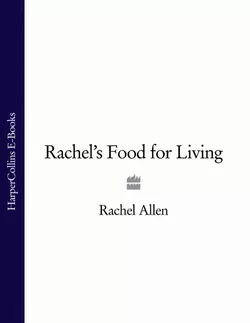Rachel’s Food for Living

Rachel Allen
Тип: электронная книга
Жанр: Кулинария
Язык: на английском языке
Стоимость: 191.96 ₽
Статус: В продаже
Издательство: HarperCollins
Дата публикации: 28.04.2024
Отзывы: Пока нет Добавить отзыв
О книге: Bestselling author and TV chef Rachel Allen is back with a celebration of favourite foods for making memories.Ever feel rapture over a pudding? Fall in love over a romantic meal? Can you remember the smell of baking in your grandmother′s kitchen? Food has the power to conjure up many emotions – it can make us feel happy or energetic, nostalgic or loved. Cooking and enjoying great food with others is part of how we relish life and in her new book, Rachel Allen provides the mouth-watering recipes to help you do just that.Rachel explores the foods that stir these wonderful feelings. She provides inspiring and easy-to-achieve suggestions for all kinds of occasions whether you want to make an indulgent celebratory meal for someone special, create memories with your kids, or need a little healthy boost…or a sneaky treat! This is the food that will make you smile.Rachel′s Food for Living includes over 100 new recipes such as Greek Lamb, Onion and Butter Bean Stew; Korean Beef with Avocado Rice; Spanish Chorizo and Chickpea Soup; Little Mocha Kisses.Contents include:1 Food for the soul2 Childhood favourites3 Making memories4 Something to celebrate5 The Lazy Sunday6 An elegant afternoon7 Pleasure without the guilt8 Food for romance9 For the love of chocolate10 Classic dishes